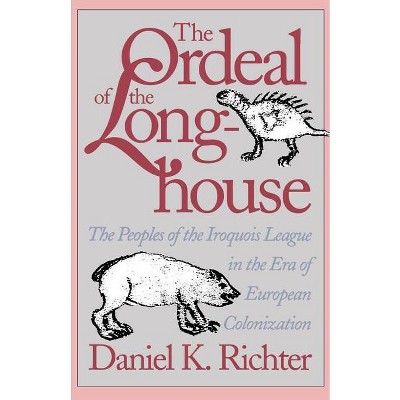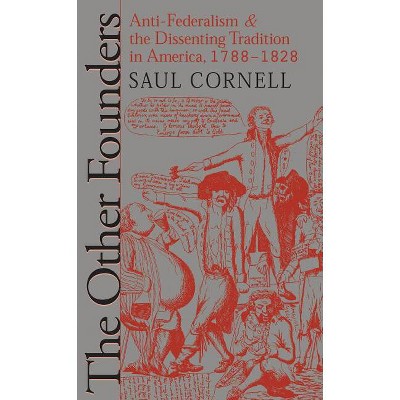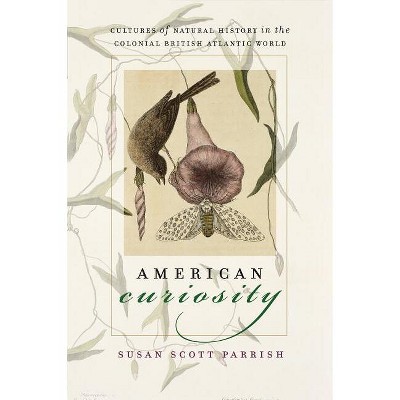Separate Canaan - (Published by the Omohundro Institute of Early American Histo) by Jon F Sensbach (Paperback)

About this item
Highlights
- In colonial North Carolina, German-speaking settlers from the Moravian Church founded a religious refuge -- an ideal society, they hoped, whose blueprint for daily life was the Bible and whose Chief Elder was Christ himself.
- About the Author: Jon F. Sensbach is assistant professor of history at the University of Southern Mississippi.
- 368 Pages
- Social Science, Ethnic Studies
- Series Name: Published by the Omohundro Institute of Early American Histo
Description
About the Book
Separate Canaan: The Making of an Afro-Moravian World in North Carolina, 1763-1840Book Synopsis
In colonial North Carolina, German-speaking settlers from the Moravian Church founded a religious refuge -- an ideal society, they hoped, whose blueprint for daily life was the Bible and whose Chief Elder was Christ himself. As the community's demand for labor grew, the Moravian Brethren bought slaves to help operate their farms, shops, and industries. Moravians believed in the universalism of the gospel and baptized dozens of African Americans, who became full members of tightly knit Moravian congregations. For decades, white and black Brethren worked and worshiped together -- though white Moravians never abandoned their belief that black slavery was ordained by God.Based on German church documents, including dozens of rare biographies of black Moravians, A Separate Canaan is the first full-length study of contact between people of German and African descent in early America. Exploring the fluidity of race in Revolutionary era America, it highlights the struggle of African Americans to secure their fragile place in a culture unwilling to give them full human rights. In the early nineteenth century, white Moravians forsook their spiritual inclusiveness, installing blacks in a separate church. Just as white Americans throughout the new republic rejected African American equality, the Moravian story illustrates the power of slavery and race to overwhelm other ideals.
From the Back Cover
In eighteenth-century North Carolina, German-speaking settlers from the Moravian Church founded a religious refuge - an ideal society, they hoped, whose blueprint for daily life was the Bible and whose Chief Elder was Christ himself. As the community grew, so did its demand for labor, and Moravians began buying slaves to help build and operate their farms, ships, and industries. The Moravian Brethren believed in the universalism of the gospel and baptized dozens of African Americans, who became full members of tightly knit Moravian congregations. For decades, white and black Brethren worked and worshiped together, far removed from the sprawling plantations to the east. Black Moravians spoke, read, and sang in German, played Moravian music on classical instruments, and shared communal dormitories with white Moravians. According to Jon Sensbach, the Moravian social experiment demonstrated the fluidity of race in an age when Revolutionary rhetoric championed the rights of man - even though white Brethren never abandoned their belief that black slavery was ordained by God.Review Quotes
[A] valuable contribution for historians of African-Americans, religion, and colonial North America.
"Journal of Interdisciplinary History"
ÝA¨ valuable contribution for historians of African-Americans, religion, and colonial North America.
"Journal of Interdisciplinary History"
Very rich and resourceful and highly readable, the book is a demonstration of superb scholarship.
"Journal of Religion"
"[A] valuable contribution for historians of African-Americans, religion, and colonial North America.
"Journal of Interdisciplinary History""
"Very rich and resourceful and highly readable, the book is a demonstration of superb scholarship.
"Journal of Religion""
A beautifully written book that is a pleasure to read.
"Journal of the Early Republic"
Sensbach's argument on how race and spiritual relations changed is persuasive.
"Journal of American History"
Sensbach's book is well written and comprehensively researched.
"Journal of American Studies"
About the Author
Jon F. Sensbach is assistant professor of history at the University of Southern Mississippi. Previously, he worked as a public historian at Old Salem in Winston-Salem, North Carolina.Shipping details
Return details
Trending Non-Fiction











